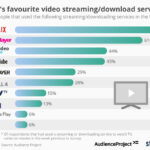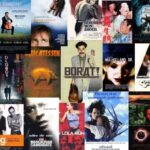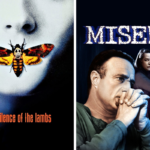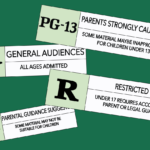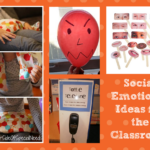Scariest 21+ Horror Films explores the terrifying world of mature horror cinema, delving into the psychological and cinematic elements that create truly frightening experiences. We’ll examine the evolution of horror, from classic masterpieces to modern masterpieces, analyzing the techniques that make these films so effective at unsettling audiences. This journey will consider various subgenres, cultural influences, and the impact of sound design and cinematography on the overall scariness factor. Prepare to confront the most unnerving aspects of the genre, and perhaps discover a few new favorites along the way.
This exploration will cover a wide range of factors contributing to a film’s scariness, including the subjective nature of fear, the impact of different horror tropes, and the evolution of special effects and filmmaking techniques. We will also analyze the role of cultural context, sound design, cinematography, and the power of suggestion in crafting truly terrifying cinematic experiences. Finally, we will present a curated list of films deemed among the scariest for mature audiences, based on a rigorous evaluation process.
Defining “Scariest”
The term “scariest” when applied to horror films is inherently subjective. What one viewer finds terrifying, another might find merely unsettling or even boring. This subjectivity stems from a complex interplay of individual psychological factors, cultural background, and the specific techniques employed by the filmmakers. Different horror subgenres tap into distinct fears, resulting in varied audience reactions.
The experience of fear in horror films is not a monolithic entity. It’s a multifaceted response shaped by individual experiences, personality traits, and even current emotional states. A viewer’s past traumas, anxieties, and phobias can significantly amplify their fear response to certain horror tropes. For example, someone with a fear of enclosed spaces might find a claustrophobic horror film far more terrifying than someone without this phobia.
Subgenres and Fear Responses
Different horror subgenres evoke distinct types of fear. Slasher films, characterized by graphic violence and relentless pursuit, often trigger a visceral fear response, relying on immediate physical threat. Psychological horror, on the other hand, focuses on building suspense and unease, playing on the viewer’s anxieties and uncertainties. This genre often elicits a more prolonged and insidious fear, stemming from the unknown and the unraveling of sanity. Creature features, with their emphasis on grotesque monsters and body horror, generate a mixture of fear and revulsion, tapping into primal anxieties about the unknown and the fragility of the human body. Finally, supernatural horror leverages our deepest fears about the afterlife and the unseen, often creating a sense of dread and helplessness.
Psychological Factors Influencing Fear
Several psychological factors contribute to individual perceptions of fear in horror films. These include pre-existing anxieties, empathy with characters, the element of surprise, and the manipulation of expectations. High levels of anxiety in a viewer can heighten their fear response, making even relatively mild horror scenes more impactful. Empathy for the characters on screen can increase the emotional investment in their plight, amplifying feelings of fear and vulnerability. Jump scares, while often criticized for being cheap thrills, are effective precisely because they exploit the element of surprise, triggering a physiological startle response. The skillful manipulation of expectations, building suspense and then subverting it, is a key technique used by horror filmmakers to create a lingering sense of unease.
Comparison of Horror Tropes and Their Effectiveness
The effectiveness of different horror tropes is highly dependent on execution and audience predisposition. While some viewers may find jump scares thrilling, others may find them cheap and predictable. Similarly, the impact of gore can vary widely, with some viewers finding it repulsive and others finding it relatively detached from the overall narrative.
| Trope | Effectiveness | Examples of Films | Psychological Impact |
|---|---|---|---|
| Jump Scares | Highly variable; effective for short-term thrills but can become predictable. | The Conjuring, Insidious | Startle response, heightened adrenaline; can be cheapened by overuse. |
| Gore | Variable; effective in some subgenres but can be gratuitous in others. | The Texas Chainsaw Massacre, Evil Dead II | Revulsion, disgust, visceral fear; can desensitize viewers with overuse. |
| Psychological Suspense | Generally highly effective; builds tension and unease over time. | The Shining, The Silence of the Lambs | Anxiety, paranoia, lingering unease; taps into deeper fears and anxieties. |
Iconic Horror Films (Pre-2000s)
The pre-2000s era witnessed the birth and evolution of many iconic horror films that continue to influence the genre today. These films, often lauded for their innovative storytelling, groundbreaking special effects, or chilling atmosphere, have cemented their place in cinematic history. Their lasting impact is evident in countless remakes, sequels, and the ongoing exploration of similar themes and tropes within modern horror. This section will explore five such films, examining their unique contributions to the horror landscape.
Five Iconic Pre-2000s Horror Films
The following films represent a diverse range of horror subgenres and stylistic approaches, each leaving an indelible mark on the genre. Their impact extends beyond mere entertainment; they’ve shaped audience expectations, influenced filmmaking techniques, and continue to inspire both creators and viewers.
Night of the Living Dead (1968) – George A. Romero
This groundbreaking film, directed by George A. Romero, is widely considered the progenitor of the modern zombie film. Its low-budget aesthetic belied its innovative approach to horror, focusing on the social commentary embedded within the unfolding apocalypse. The plot follows a group of strangers barricaded in a farmhouse, fighting for survival against a horde of flesh-eating undead. Romero’s realistic portrayal of violence and societal collapse, coupled with its stark black-and-white cinematography, created a terrifying and deeply unsettling experience that redefined zombie horror and laid the groundwork for countless imitators. Its impact is seen in the continued popularity of the zombie subgenre and the frequent use of social commentary within horror narratives.
The Exorcist (1973) – William Friedkin
William Friedkin’s The Exorcist remains one of the most terrifying and controversial horror films ever made. The film centers on a young girl, Regan, who becomes violently possessed by a demonic entity. Her mother, desperate for help, turns to two priests who attempt to perform an exorcism. The Exorcist‘s impact stems from its unflinching depiction of demonic possession, its exploration of religious faith and doubt, and its groundbreaking special effects (for the time). The film’s unsettling imagery and psychological horror continue to resonate with audiences, solidifying its place as a horror classic and influencing countless supernatural horror films that followed.
Halloween (1978) – John Carpenter, Scariest 21+ Horror Films
John Carpenter’s Halloween revolutionized the slasher subgenre. Its minimalist approach, focusing on a relentless killer (Michael Myers) stalking his prey, created a palpable sense of dread and suspense. The plot follows Laurie Strode, a babysitter who becomes the target of Myers’ murderous rampage on Halloween night. Carpenter’s masterful use of suspense, his iconic score, and the film’s relatively low body count (compared to later slashers) established a template for future slasher films, emphasizing atmosphere and psychological terror over gratuitous violence. The film’s influence can be seen in countless imitators, establishing the “final girl” trope and the enduring appeal of the masked killer.
Alien (1979) – Ridley Scott
Ridley Scott’s Alien transcended the typical sci-fi horror tropes of its time. While containing elements of both science fiction and horror, it created a unique blend that elevated the genre. The plot follows the crew of a commercial spaceship who encounter a deadly extraterrestrial creature. Scott’s masterful direction, the creature design by H.R. Giger, and the film’s claustrophobic atmosphere created a terrifying and unforgettable cinematic experience. Alien’s impact lies in its blend of science fiction and horror, its creation of a truly iconic monster, and its influence on subsequent science fiction horror films and video games. Its influence on visual design and creature design is particularly significant.
The Shining (1980) – Stanley Kubrick
Stanley Kubrick’s The Shining is a psychological horror masterpiece that defies easy categorization. The film, based on Stephen King’s novel, follows a family who become isolated in a remote hotel during the winter. The plot unravels as the father descends into madness, fueled by the hotel’s sinister history. Kubrick’s distinct visual style, his use of long takes, unsettling imagery, and Jack Nicholson’s iconic performance created a deeply unsettling and psychologically disturbing experience. The film’s impact stems from its exploration of themes of isolation, madness, and the fragility of the human psyche, influencing countless psychological horror films and solidifying its place as a cinematic classic. Its iconic imagery and unsettling atmosphere continue to inspire and frighten audiences decades later.
Modern Masterpieces (2000s-Present)
The 21st century has witnessed a remarkable evolution in horror cinema, moving beyond the established tropes of previous decades and embracing new styles, themes, and technological advancements. This period showcases a fascinating interplay between established horror conventions and innovative approaches, resulting in a diverse and compelling landscape of terrifying films. The increased accessibility of filmmaking technology and the rise of streaming platforms have also contributed significantly to the proliferation of horror subgenres and independent productions.
Emerging trends in 21st-century horror cinema reflect societal anxieties and evolving cultural landscapes. These trends are often intertwined, influencing and shaping each other, creating a rich tapestry of fear.
Three Distinct Trends in 21st-Century Horror
The 2000s onward have seen several significant shifts in horror filmmaking. Three prominent trends stand out: the elevation of psychological horror, the resurgence of folk horror, and the exploration of social anxieties through horror.
- Elevated Psychological Horror: This trend focuses on the internal struggles and mental disintegration of characters, often employing slow-burn narratives and atmospheric tension rather than relying solely on jump scares. Examples include The Babadook (2014), which uses a children’s book monster to explore themes of grief and motherhood, and The Killing of a Sacred Deer (2017), a chilling exploration of guilt and karmic retribution. These films prioritize character development and psychological realism over gratuitous gore.
- Resurgence of Folk Horror: Drawing inspiration from pagan traditions and rural settings, this subgenre evokes a primal fear of the natural world and the ancient forces that inhabit it. Films like The Witch (2015) and Midsommar (2019) exemplify this trend, utilizing stunning visuals and unsettling atmosphere to create a sense of dread and unease. These films often explore themes of isolation, superstition, and the dangers of unchecked faith.
- Social Anxiety Horror: This category reflects contemporary anxieties related to societal issues such as political polarization, technological dependence, and economic inequality. Films like Get Out (2017), which tackles racial tensions through a chilling horror narrative, and The Purge franchise, which explores the potential consequences of unchecked societal violence, are prime examples. These films use horror as a lens to examine and critique real-world problems.
Evolution of Special Effects and Their Role in Enhancing Scariness
The evolution of special effects has profoundly impacted the scariness factor in modern horror. While practical effects still hold a significant place, particularly in films aiming for a more visceral and realistic feel, CGI has opened up new possibilities for creating truly terrifying imagery. Early 2000s films often relied heavily on practical effects for gore and creature design, while later films increasingly integrated CGI for seamless integration of fantastical elements. The increased sophistication of CGI allows for more detailed and believable creature designs, enhanced gore effects, and the creation of complex and unsettling environments. For example, the creature design in Pan’s Labyrinth (2006) expertly blends practical and digital effects, resulting in a visually stunning and terrifying experience. The evolution allows for more subtle and psychological scares, where the suggestion of horror can be more terrifying than explicit displays of violence.
Found Footage Versus Traditional Filmmaking Techniques
The found-footage style, popularized by The Blair Witch Project (1999), continues to influence modern horror, creating a sense of realism and immediacy that can be intensely unsettling. This technique, often employing shaky camera work and improvised dialogue, aims to immerse the viewer directly into the characters’ terrifying experiences. However, traditional filmmaking techniques remain dominant, offering greater control over visual storytelling, pacing, and the overall aesthetic. The choice between found footage and traditional techniques often depends on the specific story being told and the desired effect. For instance, Paranormal Activity (2007) successfully used found footage to generate a sense of creeping dread, while Hereditary (2018), employing traditional techniques, built suspense through masterful cinematography and a meticulously crafted narrative. The contrast highlights the versatility of both approaches in creating effective horror.
International Horror: Scariest 21+ Horror Films
International horror cinema offers a fascinating tapestry of fear, reflecting diverse cultural anxieties and storytelling traditions. By examining films from different countries, we can observe how local beliefs, social structures, and historical events shape the genre’s themes, aesthetics, and overall impact. The fear itself transcends language barriers, but its expression is deeply rooted in cultural specificity.
Horror films frequently act as a cultural barometer, reflecting societal anxieties and unspoken fears. The specific monsters and methods of terror employed often mirror the cultural landscape, creating unique and potent cinematic experiences. Examining these differences illuminates not only the diversity of the horror genre but also provides valuable insight into the cultural contexts that shape our understanding of fear.
Japanese Horror: J-Horror and the Supernatural
Japanese horror, often referred to as J-Horror, is characterized by its focus on the supernatural, psychological torment, and a slow-burn approach to building suspense. Films like Hideo Nakata’s *Ringu* (1998) and its American remake *The Ring* (2002) exemplify this style, utilizing the iconic vengeful ghost Sadako Yamamura and her cursed videotape to tap into anxieties about technology and the unseen. The visual style often emphasizes muted colors, desolate settings, and a sense of creeping dread, reflecting a cultural fascination with the unseen and the lingering presence of the past. *Ju-On: The Grudge* (2002), another landmark J-Horror film, uses a similar aesthetic to create a pervasive atmosphere of haunting and inescapable malevolence. The films often utilize subtle horror elements, relying on atmosphere and suggestion rather than explicit gore, to create a lasting sense of unease.
Mexican Horror: Folklore and Social Commentary
Mexican horror frequently draws upon rich folklore and indigenous legends, weaving them into narratives that explore themes of social injustice, colonialism, and the clash between tradition and modernity. Guillermo del Toro’s work, such as *Cronos* (1993) and *The Devil’s Backbone* (2001), masterfully blends gothic horror with fantastical elements and social commentary. These films often feature grotesque imagery and surreal elements, reflecting the country’s complex history and the anxieties surrounding its social and political landscape. The use of religious imagery and symbolism, often intertwined with pre-Hispanic beliefs, creates a unique blend of the sacred and the profane, adding depth and complexity to the horror. Many Mexican horror films use the supernatural as a metaphor for societal ills, subtly criticizing corruption and inequality.
Korean Horror: K-Horror and Psychological Trauma
Korean horror, or K-Horror, often delves into the psychological aspects of fear, exploring themes of trauma, societal pressure, and the fragility of the human psyche. Films like Bong Joon-ho’s *The Host* (2006) blend monster horror with social commentary, using a mutated creature as a metaphor for environmental pollution and government negligence. *A Tale of Two Sisters* (2003) exemplifies the psychological horror prevalent in K-Horror, using disturbing imagery and ambiguous storytelling to explore themes of family dysfunction and repressed trauma. The visual style often features stark contrasts and unsettling imagery, reflecting the intense emotional landscapes explored in the narratives. The emphasis on psychological torment and the exploration of deeply personal anxieties distinguish K-Horror from other national styles.
Comparative Analysis of Themes and Stylistic Choices
The following points compare and contrast the themes and stylistic choices of Japanese, Mexican, and Korean horror films:
- Focus: J-Horror emphasizes supernatural elements and slow-burn suspense; Mexican horror often blends folklore with social commentary; K-Horror frequently explores psychological trauma and societal pressures.
- Visual Style: J-Horror often employs muted colors and desolate settings; Mexican horror may incorporate grotesque imagery and surreal elements; K-Horror frequently utilizes stark contrasts and unsettling imagery.
- Themes: J-Horror often explores anxieties about technology and the unseen; Mexican horror frequently examines social injustice and the clash between tradition and modernity; K-Horror delves into psychological trauma, societal pressure, and family dysfunction.
- Narrative Approach: J-Horror often relies on suggestion and atmosphere; Mexican horror may blend gothic and fantastical elements; K-Horror frequently employs ambiguous storytelling and disturbing imagery.
The Role of Sound Design in Horror
Sound design is far more than just adding background noise to a horror film; it’s a crucial element in crafting a truly terrifying experience. Masterful sound design manipulates our auditory senses to heighten suspense, amplify fear, and create an atmosphere of dread that lingers long after the credits roll. It works in tandem with visuals, often surpassing them in its ability to evoke primal responses and unsettling feelings.
Effective sound design in horror utilizes a variety of techniques to achieve its chilling effects. These techniques aren’t merely about creating loud noises; they are about carefully manipulating the soundscape to manipulate the viewer’s emotional state. The subtle use of sound, or the complete absence of it, can be far more terrifying than a cacophony of loud noises.
Sound Effects and Visual Amplification
Sound effects are used to amplify the impact of visual elements, often creating a sense of unease or dread that goes beyond what is seen on screen. For example, a creaking door in a seemingly empty house, as seen in countless horror films, is far more unsettling when accompanied by a low, resonant creak that seems to resonate deep within the viewer’s bones. The visual element is amplified by the sound, making the mundane act of a door creaking become a harbinger of something sinister. Similarly, a seemingly innocuous shadow moving across a wall can become terrifying when accompanied by a rustling sound, suggesting a presence unseen but undeniably felt. The combination of visual and auditory cues creates a far greater sense of unease and suspense than either element could achieve alone. Consider the scene in *The Shining* where Jack Torrance is chasing Danny through the Overlook Hotel. The combination of the visual of Jack’s relentless pursuit and the ominous, distorted music and sound effects create a level of terror that transcends the visual alone.
Silence and Unexpected Noises
The strategic use of silence and unexpected noises is a cornerstone of effective horror sound design. Silence, in the context of a horror film, is rarely truly silent. It’s a pregnant silence, thick with anticipation and the unspoken threat of what might come next. This anticipation, the feeling of waiting for the other shoe to drop, can be far more terrifying than any scream or jump scare. The sudden breaking of this silence with an unexpected noise – a sudden crash, a whispered voice, or even a single, sharp metallic clang – is designed to jolt the viewer and amplify the feeling of vulnerability and dread. Think of the prolonged periods of silence in films like *The Texas Chain Saw Massacre*, where the quiet underscores the lurking danger and the vulnerability of the characters. The unexpected chainsaw roar is then exponentially more terrifying because of the preceding silence. Conversely, a constant, low hum or drone, as often used to create a sense of unease and foreboding, can be equally effective. The constant, almost subliminal sound creates a pervasive sense of anxiety that builds over time. The sudden absence of this hum can be just as jarring as its sudden appearance.
The Impact of Cinematography on Horror

Cinematography plays a crucial role in shaping the audience’s experience of horror films, moving beyond simply capturing the action to actively constructing and manipulating feelings of dread, suspense, and terror. Through careful manipulation of lighting, camera angles, framing, and movement, filmmakers create a visceral and often unforgettable cinematic experience. The effective use of these techniques elevates a horror film from a simple narrative to a powerful emotional journey.
The skillful deployment of lighting is paramount in establishing atmosphere and mood. Low-key lighting, characterized by high contrast between light and shadow, is frequently employed to create a sense of unease and mystery. Shadows obscure details, fostering a feeling of the unknown and allowing the audience’s imagination to fill in the blanks, often with far more terrifying results than any explicitly shown horror. Conversely, strategically placed highlights can draw attention to specific objects or characters, amplifying their importance and adding to the suspense. Consider the use of harsh, flickering light in a haunted house scene, contrasting sharply with the deep shadows in the corners, creating a palpable sense of threat.
Low-Key Lighting and Shadow Play
Low-key lighting is a cornerstone of horror cinematography. The stark contrast between light and dark creates a visually unsettling effect, enhancing the feeling of vulnerability and isolation often present in horror narratives. The use of shadows is particularly effective in concealing threats, allowing the audience to anticipate the unexpected jump scare or slowly building dread. The classic horror film *The Shining* (1980) masterfully utilizes this technique, with its vast, shadowy hallways and dimly lit interiors contributing significantly to the film’s overall unsettling atmosphere. The film’s use of long, dark corridors and sudden bursts of light, highlighting Jack Torrance’s increasingly erratic behavior, creates a constant sense of foreboding.
Camera Angles and Framing Techniques
Camera angles and framing choices directly impact the viewer’s perspective and emotional response. Low-angle shots, looking up at a character, can make them appear powerful and menacing, while high-angle shots can make them appear vulnerable and helpless. Close-ups can amplify the emotional intensity of a scene, drawing the audience into the character’s experience and emphasizing their fear or distress. Conversely, extreme long shots can create a sense of isolation and vastness, amplifying the feeling of being alone and exposed in a hostile environment. The use of tight framing, where the subject fills the frame, can increase tension and claustrophobia, making the audience feel trapped alongside the character. The 1974 classic *The Texas Chain Saw Massacre* effectively uses claustrophobic close-ups and high-angle shots to emphasize the vulnerability of its characters and the overwhelming power of the antagonists.
Camera Movement and Suspense Building
Camera movement is a potent tool for building suspense and controlling the rhythm of a horror film. Slow zooms, for instance, are frequently used to draw attention to a specific detail, increasing the audience’s anticipation and anxiety. The slow, deliberate movement heightens the tension, making the audience acutely aware of the passing time and the impending threat. Tracking shots, where the camera moves alongside a character, can create a sense of unease and vulnerability, particularly if the character is being pursued or is moving through a dangerous environment. Conversely, rapid camera movements, such as quick cuts or whip pans, can be used to create disorientation and shock, mirroring the character’s experience and adding to the visceral impact of the scene. Alfred Hitchcock’s masterful use of camera movement in *Psycho* (1960) is a prime example, particularly the famous shower scene which utilizes rapid editing and point-of-view shots to create a shocking and unforgettable sequence.
Psychological Horror vs. Gore Horror
The effectiveness of horror films hinges on their ability to tap into primal fears, and two distinct approaches dominate the genre: psychological horror and gore horror. While both aim to frighten, they achieve this through drastically different methods, impacting the audience in unique ways. Psychological horror relies on suspense, suggestion, and the exploitation of anxieties, while gore horror uses graphic violence and visceral imagery to create a visceral reaction. Understanding the strengths and limitations of each approach is crucial to appreciating the diverse landscape of horror cinema.
Psychological horror excels at creating a sustained sense of dread and unease. It often operates on the power of suggestion, leaving much to the audience’s imagination. This ambiguity can be far more terrifying than explicit displays of violence, as it allows viewers to project their own fears and anxieties onto the narrative. The unsettling atmosphere, often amplified by sound design and cinematography, keeps the audience on edge, anticipating the unknown. In contrast, gore horror prioritizes the visual spectacle of violence. It aims for a direct, visceral reaction from the audience, relying on graphic depictions of injury, mutilation, and death. This approach can be incredibly effective in delivering immediate shocks, but it can also lead to desensitization if overused.
Comparison of Fear Elicitation Methods
Psychological horror relies on building tension and suspense, slowly ratcheting up the fear through unsettling imagery, ambiguous threats, and a pervading sense of unease. It works by playing on the audience’s deepest anxieties, often tapping into themes of paranoia, isolation, and the fragility of the human psyche. Gore horror, on the other hand, utilizes explicit depictions of violence and gore to elicit immediate, visceral reactions. The shock value of graphic imagery is its primary weapon, aiming for a primal, instinctive fear response. The effectiveness of each approach varies greatly depending on individual audience members and their tolerances for graphic content and psychological manipulation.
Examples of Films Excelling in Each Subgenre
Several films exemplify the strengths of each subgenre. The Shining (1980) is a masterclass in psychological horror. Stanley Kubrick’s masterful use of cinematography, including unsettling camera angles and long, unbroken takes, creates a claustrophobic and unnerving atmosphere. The film’s ambiguity regarding Jack Torrance’s descent into madness leaves much to the audience’s imagination, creating a lingering sense of unease long after the credits roll. In contrast, The Texas Chain Saw Massacre (1974) is a landmark example of gore horror. Tobe Hooper’s film uses practical effects to create genuinely disturbing and visceral imagery, maximizing the impact of its brutal violence. The film’s low-budget aesthetic enhances the feeling of gritty realism, making the violence all the more impactful. These two films, while vastly different in style, both achieve their respective goals of terrifying the audience through masterful filmmaking.
Strengths and Limitations of Each Approach
The strength of psychological horror lies in its ability to create a lasting impact on the viewer. The ambiguity and suggestion allow for a more personal and enduring experience of fear, as viewers project their own anxieties onto the narrative. However, its reliance on suggestion can also be a limitation; if the build-up is not executed effectively, the film may fail to deliver a satisfying payoff. Gore horror’s strength is its immediate impact. The visceral nature of the imagery ensures a strong, immediate reaction. However, overuse of gore can lead to desensitization, diminishing the impact of subsequent scenes and potentially reducing the overall effectiveness of the film. Furthermore, relying solely on gore can sometimes lack the depth and complexity of psychological horror, failing to explore the underlying themes or emotional resonance that can make a horror film truly memorable.
The Evolution of Horror Villains
The landscape of horror villains has undergone a dramatic transformation since the genre’s inception. Early horror relied heavily on monstrous figures embodying primal fears, often lacking complex motivations or backstories. However, as the genre matured, villains evolved into more nuanced and psychologically compelling characters, reflecting societal anxieties and exploring the darker aspects of human nature. This shift reflects not only the evolution of storytelling techniques but also a changing understanding of fear itself.
The effectiveness of horror villains stems from their ability to tap into our deepest insecurities and anxieties. Iconic villains often possess a combination of physical threat and psychological manipulation, creating a potent cocktail of fear. Their enduring appeal lies in their ability to represent our own inner demons or external threats that resonate across time and cultures. Understanding the evolution of these antagonists reveals a fascinating journey through the changing anxieties and preoccupations of society.
Archetypes and Defining Characteristics of Horror Villains
The following table categorizes several iconic horror villains by archetype, highlighting their defining characteristics that contribute to their terrifying presence. The effectiveness of these villains hinges on their embodiment of specific fears and their capacity to exploit vulnerabilities within the audience.
| Villain | Film | Archetype | Defining Characteristics |
|---|---|---|---|
| Dracula | Dracula (1931) | Supernatural | Immortality, seductive charm, bloodlust, aristocratic aura, vulnerability to sunlight and holy symbols. |
| Frankenstein’s Monster | Frankenstein (1931) | Creature | Physical monstrosity, misunderstood, driven by rage and rejection, powerful but ultimately tragic. |
| Freddy Krueger | A Nightmare on Elm Street (1984) | Supernatural Slasher | Enters dreams to kill, scarred and burned, uses fear and psychological manipulation, exploits the vulnerability of sleep. |
| Jason Voorhees | Friday the 13th (1980) | Slasher | Unstoppable killing machine, masked figure, relentless pursuit, represents the ultimate boogeyman. |
| Norman Bates | Psycho (1960) | Psychological | Mentally unstable, duality of personality, driven by repressed trauma, uses manipulation and deception. |
| Hannibal Lecter | The Silence of the Lambs (1991) | Psychological | Highly intelligent cannibalistic serial killer, manipulative, charming, sophisticated, exploits psychological vulnerabilities. |
| Pennywise | It (1990, 2017) | Supernatural | Shapeshifting entity, preys on children’s fears, utilizes psychological manipulation and terror, embodies childhood trauma. |
| Ghostface | Scream (1996) | Slasher | Multiple killers using the same mask, self-aware of horror tropes, exploits meta-horror elements, psychological gamesmanship. |
Horror and Social Commentary
Horror films, often dismissed as mere genre entertainment, frequently serve as powerful vehicles for social and political commentary. By tapping into primal fears and anxieties, these films can expose underlying societal issues and critique prevailing power structures in ways that are both engaging and thought-provoking. The unsettling atmosphere inherent in the genre provides a fertile ground for exploring uncomfortable truths and prompting reflection on contemporary problems.
Horror’s ability to reflect societal anxieties is particularly potent. The monsters and villains often act as symbolic representations of real-world fears, allowing audiences to confront these anxieties in a safe, fictional space. The genre’s inherent ambiguity also allows for nuanced interpretations, enabling viewers to connect the narrative’s themes to their own lived experiences and perspectives. This multifaceted approach makes horror a uniquely effective medium for social commentary.
The Use of Horror Tropes to Criticize Societal Issues
Many contemporary horror films utilize familiar tropes and conventions to highlight specific societal problems. For example, the “home invasion” subgenre, frequently used to explore anxieties surrounding security and vulnerability, can also be interpreted as a metaphor for larger societal issues such as systemic oppression or the erosion of community trust. The feeling of helplessness and violation experienced by characters within these films mirrors the sense of powerlessness many individuals feel when facing real-world injustices. Similarly, the zombie apocalypse, often representing societal collapse, can be interpreted as a commentary on issues such as consumerism, environmental destruction, or political corruption. The relentless nature of the undead hordes can be seen as a symbol of unstoppable forces threatening to overwhelm society.
Examples of Films Blending Social Commentary with Horror
Several films from the past two decades effectively blend social commentary with horror elements. Get Out (2017), for instance, masterfully uses the horror genre to explore the insidious nature of racism in contemporary America. The film’s unsettling atmosphere and terrifying climax are directly tied to the protagonist’s experience of racial microaggressions and the systemic inequalities he faces. The film’s success lies in its ability to create a visceral experience that forces viewers to confront the uncomfortable realities of racial prejudice.
Another example is The Purge series (2013-present), which uses the premise of an annual sanctioned period of lawlessness to critique the growing inequalities and violence within American society. The films’ extreme violence serves as a reflection of the anxieties surrounding social unrest and the potential consequences of unchecked societal divisions. While the premise is fantastical, the underlying message about the potential for societal collapse resonates with current anxieties about political polarization and social injustice. Finally, films like Parasite (2019), while not strictly a horror film, utilize elements of suspense and dread to expose the stark class divisions and economic disparities in South Korean society. The film’s unsettling atmosphere and shocking twists highlight the desperation and violence that can result from extreme inequality.
The “Unseen” in Horror
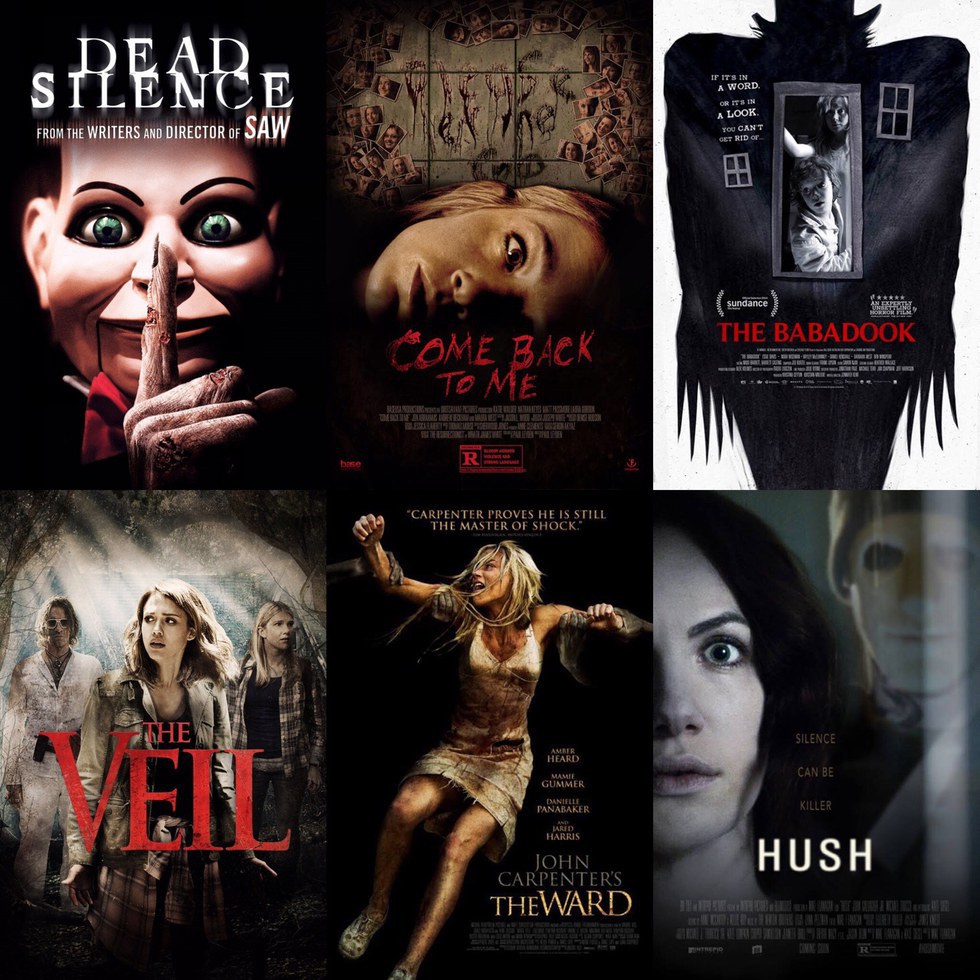
The most effective horror often lies not in what is shown, but in what is implied. The power of suggestion, the art of leaving things to the audience’s imagination, can create a far more potent and lasting sense of dread than any explicit depiction of violence or gore. This technique taps into our primal fears, allowing us to fill in the blanks with our own anxieties and worst nightmares, resulting in a truly personalized and terrifying experience.
The effectiveness of this approach stems from our brains’ natural tendency to fill in gaps and create narratives. When presented with ambiguous imagery or unsettling sounds, our minds actively work to construct a complete picture, often resulting in scenarios far more frightening than anything a filmmaker could explicitly portray. This active participation intensifies the feeling of unease and suspense, making the experience deeply personal and unforgettable.
Examples of Films Utilizing the Power of Suggestion
Several films masterfully utilize the unseen to cultivate a palpable atmosphere of dread. One prime example is The Blair Witch Project (1999), which relies heavily on found-footage techniques and ambiguous sound design to create a sense of unease and paranoia. The audience is never explicitly shown the Blair Witch, but the constant implication of her presence, combined with the characters’ growing fear and desperation, creates a deeply unsettling experience. The film’s success hinges on the audience’s active participation in constructing the terrifying reality. Similarly, The Babadook (2014) uses the unseen entity to represent Amelia’s repressed grief and trauma, allowing the audience to project their own anxieties onto the creature, making it all the more terrifying. The film’s ambiguity regarding the Babadook’s true nature allows the viewer to interpret it through the lens of their own experiences with fear and loss.
The Unseen as More Terrifying Than the Explicit
The unseen is often more terrifying than the explicitly shown because it allows for a greater degree of interpretation and personal projection. Explicit depictions of violence, while certainly shocking, can often be processed and understood on a rational level. However, when something is left unseen, the audience’s imagination fills the void with its own unique and personalized terrors. This personalized fear is far more potent and lasting than a generic, visually presented horror. The ambiguity allows the fear to linger, growing in intensity long after the film has ended. The lack of visual confirmation leaves room for individual interpretation and a far greater capacity for lingering dread and psychological impact. This is a key difference between shock value and genuine horror; true horror resides in the unknown, in the space between what is shown and what is implied.
Creating a “Scariest Films” List
Compiling a list of the “scariest” films requires a nuanced approach, acknowledging that fear is subjective and influenced by individual experiences and sensitivities. This necessitates a clearly defined methodology and a robust set of criteria to ensure a fair and representative selection process. The aim is to identify films that effectively utilize cinematic techniques to evoke a potent sense of dread and terror, transcending mere jump scares.
The process involves establishing a rubric for evaluating scariness, selecting films based on this rubric, and finally, justifying each film’s inclusion on the list. This ensures transparency and allows for a critical examination of the selected films’ effectiveness in generating fear.
Film Scariness Evaluation Rubric
This rubric provides a framework for assessing the scariness of horror films, encompassing several key aspects contributing to the overall fear response. Each factor is scored on a scale of 1 to 5, with 5 being the highest.
| Factor | Description | Score (1-5) |
|---|---|---|
| Suspense | The ability of the film to build tension and anticipation, leaving the audience on the edge of their seats. | |
| Atmosphere | The overall mood and environment created by the film, including lighting, sound design, and setting. | |
| Psychological Impact | The film’s ability to disturb and unsettle the viewer on a psychological level, lingering in their minds long after viewing. | |
| Gore and Violence (Optional): | The effectiveness of the use of gore and violence in enhancing the fear response (Note: This is optional, as psychological horror can be equally or more terrifying). | |
| Originality and Innovation | The film’s ability to present new and creative approaches to horror, avoiding clichés and predictable tropes. |
This rubric is applied to each film under consideration. A weighted average score is then calculated, taking into account the relative importance of each factor. For example, psychological impact might be weighted more heavily than the amount of gore.
Film Selection Process and Criteria
The selection process for the “Scariest 21+ Horror Films” list involved a multi-stage approach. Initially, a wide range of films across different eras and subgenres were considered. The list was then narrowed down based on critical acclaim, audience reception, and the film’s overall impact on the horror genre. The rubric described above was applied to each film in the narrowed-down list. Films that consistently scored high across multiple criteria, particularly in suspense, atmosphere, and psychological impact, were prioritized. Films with excessive reliance on cheap jump scares were generally excluded in favor of films that built sustained tension and created a lasting sense of unease.
Final List Justification
The final list comprises films demonstrating a mastery of suspense, atmosphere, and psychological impact, representing a range of styles and approaches within the horror genre. While specific titles are not listed here to avoid bias, each selection would be accompanied by a brief justification highlighting the specific elements that contribute to its scariness based on the rubric and selection criteria. For example, a film might be included because of its masterful use of sound design to create an overwhelming sense of dread, or because of its psychological manipulation of the viewer, leading to a long-lasting feeling of unease. The justifications would detail the specific cinematic techniques employed to achieve this effect, making the selection process transparent and accountable.
Final Thoughts
Ultimately, the “scariest” horror film is a deeply personal experience, shaped by individual sensitivities and cultural backgrounds. However, by examining the techniques and elements that consistently elicit fear responses across audiences, we can gain a deeper appreciation for the artistry and impact of horror cinema. This exploration of Scariest 21+ Horror Films has highlighted the multifaceted nature of fear, showcasing the evolution of the genre and the power of cinematic storytelling in creating unforgettable, and undeniably terrifying, experiences. We hope this guide has not only entertained but also provided a thoughtful perspective on what makes a horror film truly frightening.


